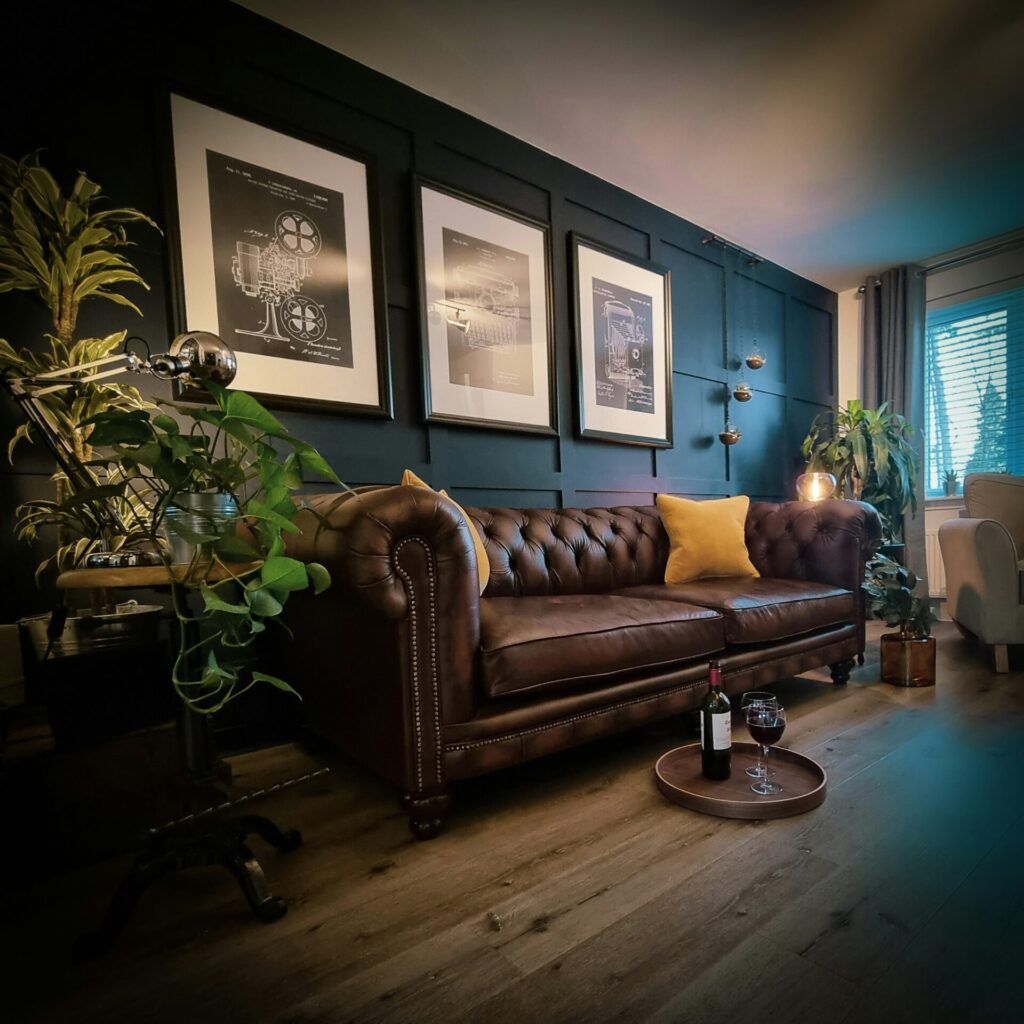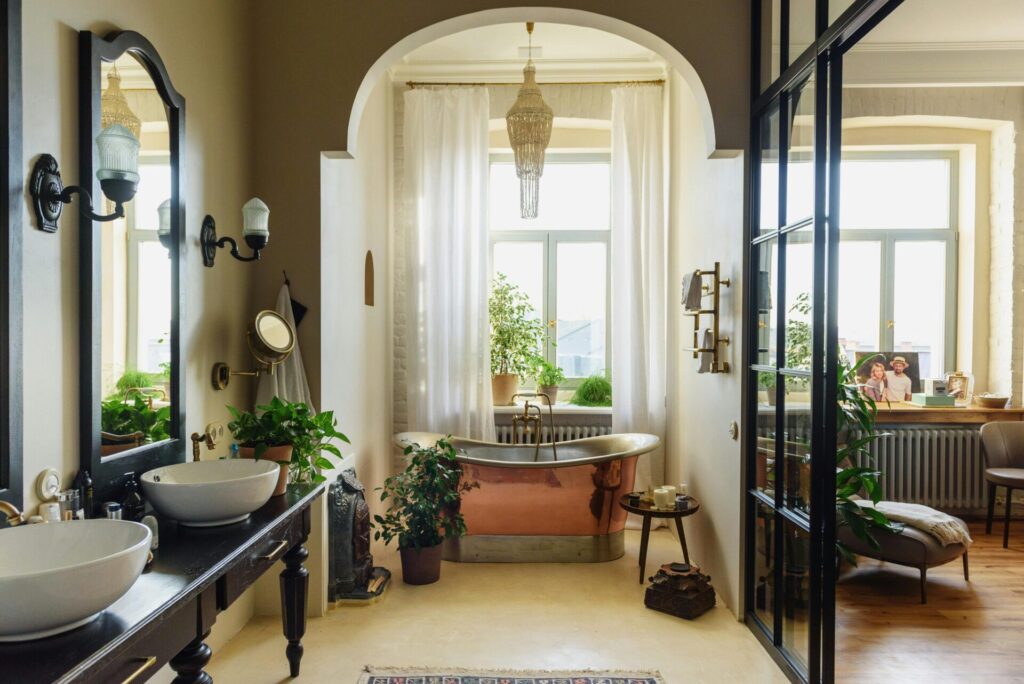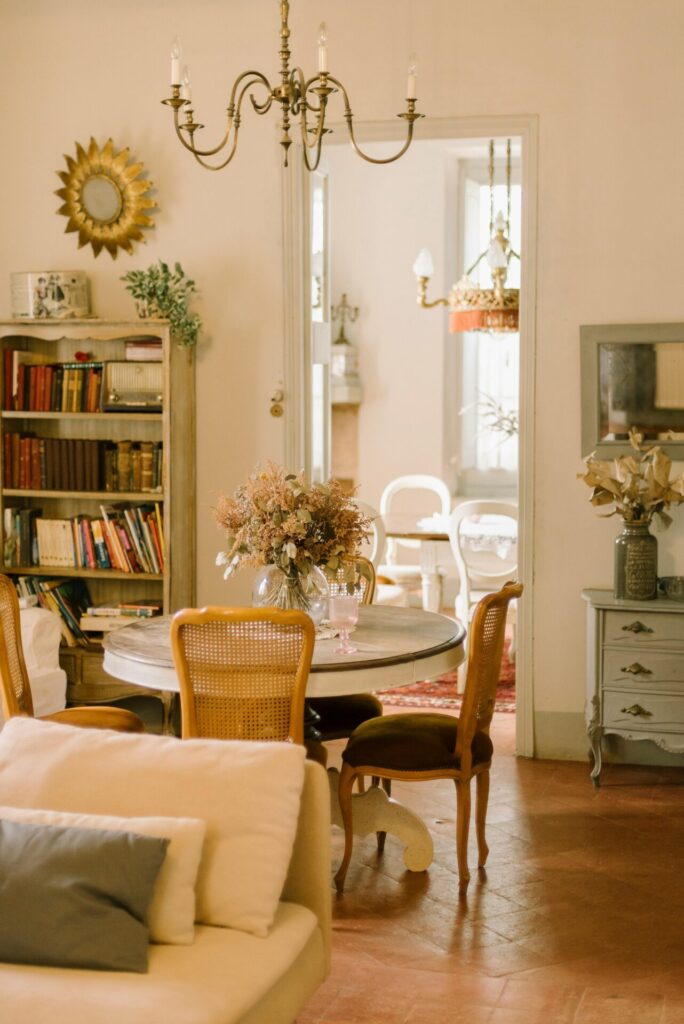The Art of Slow Decorating: How to Create a Meaningful Space Over Time

“Proud Homemaker is part of several affiliate marketing programs, so we may earn commissions on products selected and purchased through our retailer links.”
When I first moved into my home, I felt this pressure to have everything picture-perfect in just a few weeks. I’d scroll through Pinterest and Instagram, see those flawlessly styled rooms, and think, “Okay, I need to get all the furniture, all the decor, and make it look just right right now.” But the truth? Rushing into decorating left me with stuff I didn’t love and a space that didn’t feel like me. That’s when I stumbled across the idea of slow decorating—and let me tell you, it totally changed the way I approach my home.
Slow decorating is all about taking your time, listening to your space, and creating a meaningful home that reflects who you are. It’s not about chasing trends or filling up every corner immediately. It’s about choosing pieces intentionally, letting your style evolve, and curating a personalized space over time. There’s something really freeing (and fun!) about decorating at your own pace—it gives you time to figure out what truly feels right. If you’re someone who wants to build a home that tells your story, this slower, more mindful approach might be exactly what you need.
Read also: How to Make Small Rooms Look Spacious: 7 Hotel Design
What Exactly Is Slow Decorating?
To put it simply, slow decorating is the opposite of those weekend makeover shows where they redo an entire home in 48 hours. It’s about ditching the pressure to have everything “finished” and instead, letting your home evolve over time.
When I first heard the term, I laughed and thought, “Isn’t that just procrastinating with extra steps?” But as I learned more, I realized it’s a mindset shift. It means buying things because they mean something, not just because they look good. It means living in a space long enough to understand what it truly needs.
The Real-Life Benefits of Slow Decorating (Trust Me, It’s a Game-Changer)
Let me tell you—embracing slow decorating has been one of the most unexpectedly rewarding shifts I’ve made in how I approach my home. It’s not just about making things look pretty. It’s about creating a meaningful home that actually feels like home. Here’s how it’s completely transformed my space, my mindset, and honestly… my life.
1. Your Home Finally Feels Like You
Before I discovered the magic of slow decorating, my living room looked like it came straight out of a catalog. Don’t get me wrong—it was styled, symmetrical, and had all the “right” pieces. But something was missing. It didn’t feel like me. It felt like someone else’s idea of a beautiful space.
Fast forward to now: my favorite corner has my grandmother’s vintage lamp that hums with history, a stack of travel books from places I’ve actually been, and a funky little side table I found at a flea market and carried three blocks home because I fell head-over-heels in love with it. It’s cozy, it’s layered, and most importantly—it tells my story. That’s the heart of personalized home decorating: your space becomes a scrapbook of your life.

2. You Stop Wasting Money (and Sanity)
I used to be the queen of impulse decor shopping. I’d walk into a store for one thing and walk out with a bag full of throw pillows, candles, and a wall print that, honestly, I didn’t even like that much. And guess what? Most of it ended up being returned, donated, or stuffed in a closet.
Once I embraced intentional decorating, that changed. I started pausing before purchases, making mood boards, and waiting until I found something I genuinely loved. Now, I save up for pieces I’ll treasure for years, not just until the next trend hits Instagram. My wallet’s happier, and my home isn’t full of random filler items that don’t serve a purpose or spark joy.
3. Clutter? What Clutter?
There’s something oddly satisfying about empty corners and blank walls when you know you’re waiting for the right item to come along. Before, I used to fill space just for the sake of it—vases here, knick-knacks there, and so many baskets I lost track of what was inside them.
With slow, intentional decorating, I’ve learned to value negative space. Every object now has a role—whether it’s functional, beautiful, or both. The result? A home that feels airy, peaceful, and lived in without being messy or overwhelming. It’s like visual breathing room.
4. It’s a Greener, Kinder Way to Decorate
The more I slowed down, the more I became aware of the environmental impact of my choices. Decorating fast often meant cheap, mass-produced pieces that didn’t last. But with slow decorating, I’ve started buying fewer, better things. I find myself gravitating toward local makers, secondhand treasures, and materials that are built to last.
One of my proudest finds? A reclaimed wood dining table made by a local craftsman. It’s imperfect in the best way—full of knots and stories—and I know I’ll have it for decades. Decorating slowly has made me a more thoughtful, eco-conscious consumer. And that feels really, really good.
Read also: 4 Unique Magazine Display Ideas to Add Flair to Your Home
How to Embrace Slow Decorating (A Love Letter to Patience and Personality)
Okay, so you’re intrigued—maybe even fired up—and ready to ditch the pressure to “get it all done.” But how exactly do you start this beautifully slow and intentional decorating journey?
Here’s how I began, step by heartfelt step.
1. Live In Your Space First (Seriously—Do Nothing!)
When we first moved in, I resisted every urge to hit the stores. No decor hauls. No frantic online shopping. Just me, my coffee, and a not-so-cute empty room.
And guess what? That pause was pure magic. I watched how the sunlight danced across the hardwood floors in the afternoon, how the quiet corners begged for bookshelves, how we actually used the space (not how we thought we would).
It turns out that your home tells you what it needs—if you’re willing to slow down and listen.
2. Start With What You Love (Even If It Makes No Sense)

My slow decorating story began with a random, glorious painting I found in a dusty little shop in Italy. It was bold. It was colorful. It matched nothing. And I didn’t care—I was in love.
That one unexpected piece sparked the entire vibe of our dining room. Instead of forcing a style, I let the room bloom around something I was passionate about. If you want a home that feels deeply personal, start with the things that light you up—not what’s trending on Instagram.
3. Mix the Old with the New (Trust Me, It’s Magic)
I have a hand-me-down wooden bench that’s older than I am—and I wouldn’t trade it for all the sleek, trendy furniture in the world. It squeaks, it wobbles a bit, and it’s packed with soul.
Mixing vintage finds with newer pieces creates that layered, “collected over time” look that money can’t buy. Each item has a story, and together, they create a home that feels like you, not a showroom.
4. Focus on Function, Not Just Aesthetics
Ask yourself: “How do we really live in this space?”
We had a formal dining room we never used—ever. So one day, we tossed tradition aside and turned it into a cozy, sunlit reading nook. Comfy chairs, a bookshelf, and a soft rug transformed the forgotten space into the most-loved spot in the house.
Design your home for your real life, not the one you think you’re supposed to live.
How to Master the Art of Slow Decorating (Hint: It’s Not About Perfection)
Mastering slow decorating isn’t about following a set of strict rules—it’s about learning to trust your instincts, savor the process, and let your home evolve naturally. Here’s what’s helped me let go of the rush and fall in love with the journey:
1. Create a Mood Board (But Don’t Marry It)
I adore Pinterest—but I use it differently now. Instead of turning my boards into a must-have shopping list, I use them to dream. I gather photos that feel like the life I want to live: cozy nooks, meaningful art, worn-in furniture that looks like it has stories to tell.
My mood board is a compass, not a contract. It keeps me grounded in the vibe I’m going for, even if the final look is totally unique.
2. Wait Before You Buy (Yes, Even When It’s on Sale)
Here’s my golden rule: if I see something I love, I wait. A week. Maybe two. If I’m still daydreaming about that object, it’s meant to be. If I forget about it entirely? Bullet dodged.
This pause has saved me from piles of regret—and from cluttering my home with “meh” pieces I bought out of boredom or impulse. It’s like dating: don’t settle for the first thing that winks at you.
3. Ask the Big Question: Will I Love This in 5 Years?
Every time I’m tempted by something shiny and trendy, I stop and ask: Will I still love this five years from now?
That question is a total game-changer. It helps me stay true to my style and invest in pieces with staying power. Spoiler alert: timeless > trendy, every single time.
4. Learn to Love Empty Spaces (They’re Not Failures—They’re Potential)
Empty walls used to haunt me. I’d stare at blank corners and feel this itch to fill them right now.
But now? I see them as possibilities. Those empty spots are waiting for something truly meaningful, not just something fast and forgettable. And when that perfect piece finally shows up? Oh, the joy is a chef’s kiss.
Empty space is not a decorating flaw. It’s an open invitation.
Real-Life Moments That Taught Me the Beauty of Slow Decorating (And Why I’ll Never Go Back)
Let me tell you a secret: my home didn’t come together in a weekend. Or a month. Or even a year.
It took time. It took patience. And it took learning to trust the process of slow decorating. While the internet is overflowing with overnight room makeovers and perfectly styled homes, my journey looked more like a long, meandering walk through antique markets, quiet afternoons sitting in empty rooms, and a thousand tiny decisions that eventually created something I truly love.
So if you’re wondering what slow decorating really looks like, here are some deeply personal, real-life moments from my home that will hopefully inspire your own story.
The Entryway Bench That Wasn’t Part of the Plan
For months—yes, months—our entryway stood embarrassingly empty. Visitors would walk in and be greeted by… well, nothing. I told myself I’d find the right piece eventually, but I secretly wondered if I was just being too picky.
Then one weekend, while aimlessly browsing a local market (with no shopping list, mind you), I saw it: a rustic wooden bench with just the right amount of weathering. It wasn’t trendy. It wasn’t even particularly eye-catching. But I knew instantly—it belonged with us.
Now, that bench is more than just a seat for putting on shoes. It’s a warm little moment that says, “You’re home.” And every time I pass it, I’m reminded that waiting for the right piece is always worth it.
The Rug Saga That Nearly Broke Me
Let me introduce you to what I call: The Rug Saga of the Living Room—also known as The Time I Returned Three Rugs and Nearly Gave Up.
I tried bold prints. I tried soft neutrals. I even tried a shag that shed like a golden retriever in summer. Nothing felt right. For a while, I seriously considered just giving in to “good enough” and calling it a day.
But then I stumbled on a vintage rug online—frayed edges, perfectly faded colors, and just enough quirk to make my heart skip a beat. When it arrived, it didn’t just match the room—it anchored it.
That rug taught me patience and persistence. The hunt was long, but the reward? Oh, so sweet.
The Gallery Wall That Took a Year (And Deserved Every Second)
Confession: I am obsessed with gallery walls—but not the kind you knock out in a weekend with a matching frame set from the store. No, mine took a year. A full year of slow collecting.
Some of the frames came from flea markets, some from my travels. The art ranged from family photos to postcards and abstract prints I fell in love with at first sight. There was no formula—just feeling.
Every piece was added with care, and every time I look at that wall now, I feel a sense of joy that no pre-curated gallery set could ever replicate. It’s not just wall decor—it’s a timeline of our lives.
The Big Lesson: Your Home Is a Living Story
Here’s what slow decorating has taught me:
Your home isn’t a checklist. It’s not a race. It’s not something you need to finish before guests come over or before the next season rolls around.
It’s a living, breathing reflection of who you are—and who you’re becoming.
By letting your space unfold gradually, piece by meaningful piece, you create a home that’s layered with stories, warmth, and a kind of beauty that no trend can touch.
So if you’re staring at blank walls or unfinished corners and feeling behind, take a deep breath. You’re not behind—you’re in the middle of your story. And that’s a beautiful place to be.
Let your home grow with you. Be okay with the pause. Savor the waiting. Trust the process.
Because in the end, slow decorating isn’t just about how your home looks—it’s about how it feels.
Was this article helpful? We’d love to hear your feedback, ideas, or any blog post requests you have—drop them in the comments below!







1 Comment